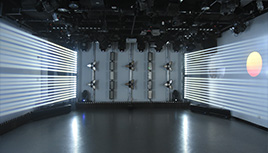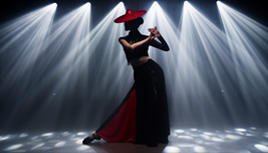The Benefits of Upgrading to LED Stage Lighting Systems
2025-02-05 Post By: Longmangroup
Upgrading to LED stage lighting systems offers numerous advantages over traditional lighting technologies, including enhanced energy efficiency, extended lifespan, superior color rendering, and reduced maintenance costs. These benefits not only improve the quality of stage productions but also contribute to significant cost savings and environmental sustainability.Energy Efficiency
LED stage lights consume significantly less power compared to incandescent or halogen lamps. For instance, an LED fixture that produces the same light output as a 500-watt incandescent bulb may only require 100 watts, resulting in substantial energy savings. This efficiency translates into lower electricity bills and a reduced carbon footprint for venues and productions.
Extended Lifespan
LEDs have a much longer operational life than traditional bulbs. While incandescent bulbs typically last around 1, 000 hours, LEDs can operate for up to 25, 000 hours or more. This longevity reduces the frequency of replacements, leading to lower maintenance costs and less downtime during performances.
Superior Color Rendering and Versatility
LED stage lights offer exceptional color properties, allowing for dynamic and vibrant lighting effects. They can produce a wide spectrum of colors without the need for gels or filters, providing greater flexibility in design and execution. This versatility enables lighting designers to create more immersive and visually appealing experiences for audiences.
Reduced Heat Emission
Traditional stage lighting can generate significant heat, creating uncomfortable conditions for performers and increasing air conditioning costs. LED lights emit considerably less heat, contributing to a more comfortable environment on stage and reducing the need for extensive cooling systems.
Environmental Impact
By consuming less energy and having a longer lifespan, LED stage lighting systems contribute to environmental sustainability. They reduce the frequency of bulb replacements, decreasing waste and the environmental impact associated with manufacturing and disposing of traditional lighting components.
Cost Savings
Although the initial investment in LED stage lighting may be higher, the long-term savings are substantial. Reduced energy consumption, lower maintenance costs, and fewer replacements result in a favorable return on investment over time. For example, a theater that switches to LED lighting can experience a significant reduction in electricity consumption and maintenance expenses, leading to overall cost savings.
Below is a detailed comparison of various lighting types, including moving head lights, par lights, wash lights, gobo lights, profile lights, and ellipsoidal lights, highlighting the benefits and performance improvements achieved by transitioning to LED technology.
1. Moving Head Lights
Traditional moving head lights often utilize high-wattage lamps, consuming substantial power and generating considerable heat. For instance, a conventional moving head light might use a 700W lamp. In contrast, LED moving head lights can achieve similar or superior brightness levels with significantly lower power consumption, such as 200W to 300W. This reduction leads to lower energy costs and less heat production, enhancing safety and comfort during performances.
2. Par Lights
Traditional par cans, especially those using incandescent bulbs, are known for their high energy consumption and shorter lifespan. An incandescent par can may consume around 500W. LED par lights, however, can deliver comparable brightness with power usage as low as 100W, resulting in significant energy savings and reduced heat output. Additionally, LED par lights offer a longer lifespan, reducing the frequency of replacements and maintenance efforts.
3. Wash Lights
Wash lights are essential for providing broad, even illumination across a stage. Traditional wash lights often use multiple high-wattage lamps to achieve the desired coverage. LED wash lights can produce the same level of illumination with fewer LEDs, consuming less power and generating less heat. This efficiency not only lowers energy costs but also enhances the comfort of performers and audience members by reducing ambient heat.
4. Gobo Lights
Gobo lights project patterns or images onto surfaces, adding visual interest to performances. Traditional gobo lights typically use high-wattage lamps, leading to higher energy consumption and heat production. LED gobo lights can achieve similar effects with lower power usage, contributing to energy savings and a more comfortable environment. Moreover, LED gobo lights often offer greater versatility in color mixing and pattern projection, enhancing creative possibilities.
5. Profile Lights
Profile lights are used for sharp-edged, focused beams, often requiring high-wattage lamps to achieve the necessary intensity. LED profile lights can produce comparable beam quality with significantly lower power consumption, such as 150W to 200W compared to 500W in traditional fixtures. This reduction leads to lower energy costs and less heat generation, improving the overall performance environment.
6. Ellipsoidal Lights
Ellipsoidal lights, commonly used for precise beam control and pattern projection, traditionally rely on high-wattage lamps. LED ellipsoidal lights can achieve similar performance with lower power usage, resulting in energy savings and reduced heat output. Additionally, LED ellipsoidal lights often offer longer lifespans, reducing maintenance requirements and associated costs.
By upgrading to LED lighting, venues can achieve superior performance while realizing significant cost savings and contributing to environmental sustainability.














